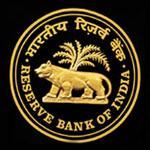The Reserve Bank of India has kept the key policy rates and the cash reserve ratio (CRR) unchanged in its mid-quarter monetary policy review. The CRR of scheduled banks is unchanged at 4 per cent of their net demand and time liabilities while the policy repo rate under the liquidity adjustment facility (LAF) is unchanged at 7.25 per cent.
The policy stand of the central bank is as expected since the upside risk to inflation continues to emerge from the depreciating rupee against the dollar.
Immediate reaction from the banks is that the policy review is a non-event and they will continue to focus on garnering more retail deposits.
The RBI has taken a no-cut policy stance because of the evolving growth-inflation dynamic, the balance of risks, as well as recent developments in the external sector.
Headline WPI inflation eased for three months in a row with the May reading at 4.7 per cent, down from an average of 7.4 per cent in 2012-13.
However, the RBI noted that the elevated food inflation, particularly in cereals and vegetables, sustained the upside pressures on overall inflation.
Another important consideration for the RBI is the significant development in the external sector, especially the movement in the exchange rate. The rupee depreciated 5.8 per cent against the US dollar during the current financial year up to June 14. It fell 6.6 per cent during May 22-June 11 due to sell-off by foreign institutional investors, thus reflecting risk-off sentiment triggered by the apprehensions of possible tapering off of quantitative easing by the US Fed.
While the RBI is now more comfortable with the domestic scenario that can support some monetary easing, it has heightened its risk perception of the external atmosphere, said Indranil Pan, chief economist at the Kotak Mahindra Bank.
“The apprehension of the RBI comes from the fact that there could be a sudden stop and reversal of capital flows from the emerging markets, including India. After factoring in the risks to inflation and also the global financial markets, we see a bigger probability for the RBI to stay on a pause in the July policy meeting. We also believe that the chances of an extended pause have increased”, he added.
However, bankers and NBFCs have indicated possible rate cuts in the later part of the financial year. “We expect rate cuts but the timing will be based on inflation views, currency movements and capital inflow,” said George Alexander Muthoot, managing director of Muthoot Finance Ltd.
IndoStar Capital Finance, another NBFC into corporate lending, said the hawkish tone of the RBI on inflation outlook must be factored in for looking at future easing. “We have not yet seen any uptick in the investment cycle. A possible boost may come if the government can resolve issues in the marooned infrastructure projects, especially in the power sector,” said Vimal Bhandari, CEO & managing director.
Most bankers also said there wouldn’t be any revision in the lending and the deposit rates. The recent incidents of chit funds going belly up have also resulted in the flight of retail money into bank deposits, which makes it a case for the banks not to revise the deposit rates immediately.
“Progressive reductions in inflation rates and deposit rates continuing at elevated levels have been positive for depositors. With the monsoon progressing well and the softening of global commodity prices, we expect inflation to continue on its southward journey,” said Shyam Srinivasan, managing director & CEO of Federal Bank.
However, industry and corporate bigwigs are disappointed with the central bank’s stance.
Chandrajit Banerjee, director general of the industry body CII, said, “The decision of the RBI to hold policy rates on status quo is disappointing. At a time when both growth and inflation dynamics call for an accommodative monetary policy, the RBI has taken a cautious approach of attending to the prospect of a possible resurgence in inflation over reviving growth in the economy.”
CII also hoped that the RBI would not wait for the next quarterly review but intervene sooner if the economic condition warrants a mid-course correction.
A cut in the interest rates is an essential element to bring positive sentiment into the market. “Typically, the RBI’s decision on rate cuts is more biased towards controlling inflation than stimulating growth. Today, companies are increasingly looking for more working capital due to tight liquidity cycle and extended credit periods. Thus, there has to be an initiative towards bringing in more liquidity into the market,” said Seshagiri Rao, joint MD, JSW Steel, and the group CFO.
He also added that as of now, in every sector, no industry has the pricing power due to the lack of demand. Demand pick-up can happen if liquidity is infused and interest rates are made affordable to borrowers.
Outlook
“At the global level, the International Monetary Fund (IMF) has warned of non-trivial risks of the global economy encountering a soft patch in the months ahead. On the domestic front, last year’s robust rabi production and the monsoon performance so far augur well for growth prospects,” said RBI.
However, the main challenge is to reduce the CAD to a sustainable level and the near-term challenge is to finance it through stable flows.
The most recent number regarding the Centre’s fiscal deficit, at 4.9 per cent of GDP for 2012-13, has turned out better than expected and instils confidence in the government’s commitment to contain the fiscal deficit for 2013-14 at 4.8 per cent.
(Edited by Sanghamitra Mandal)






